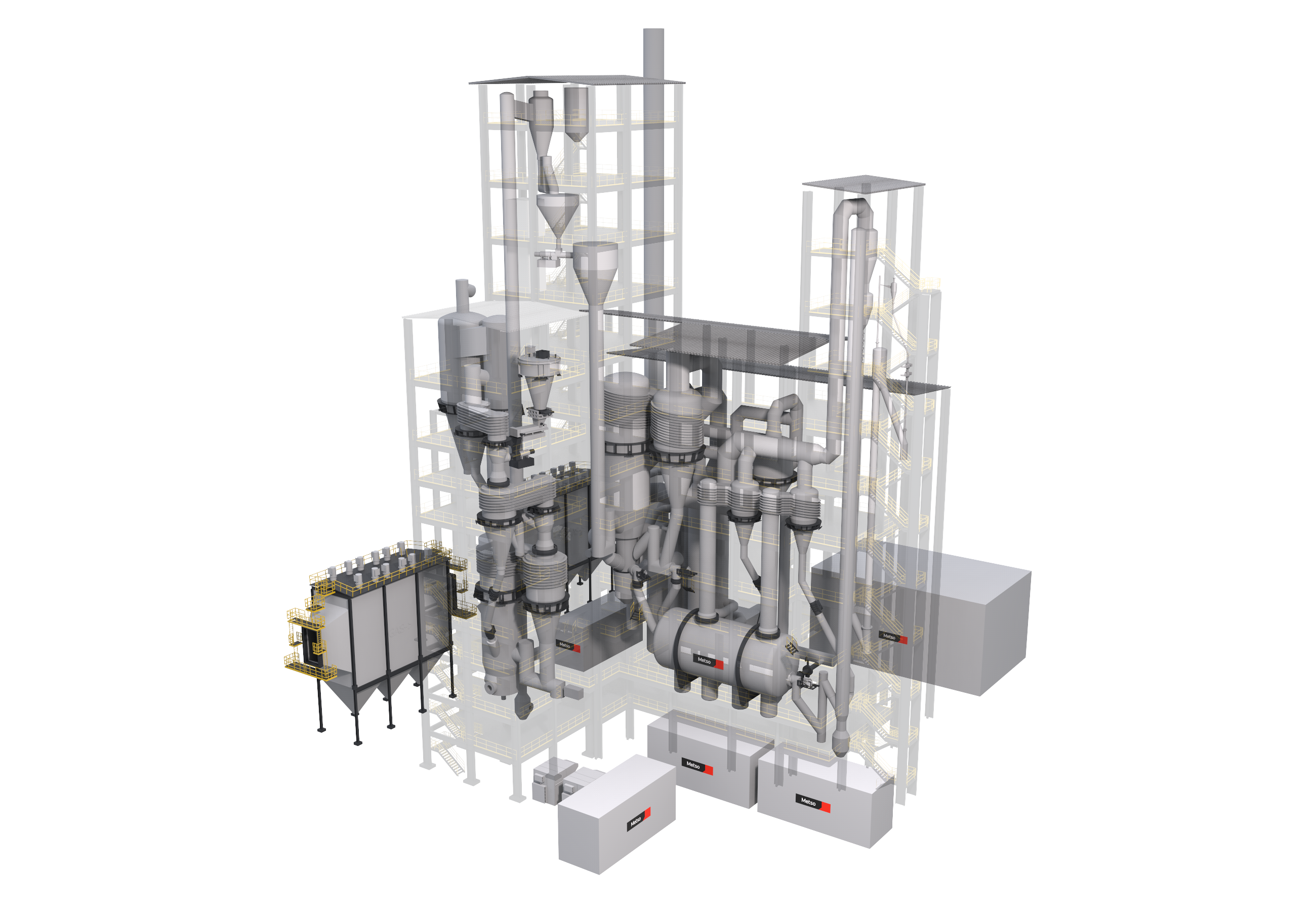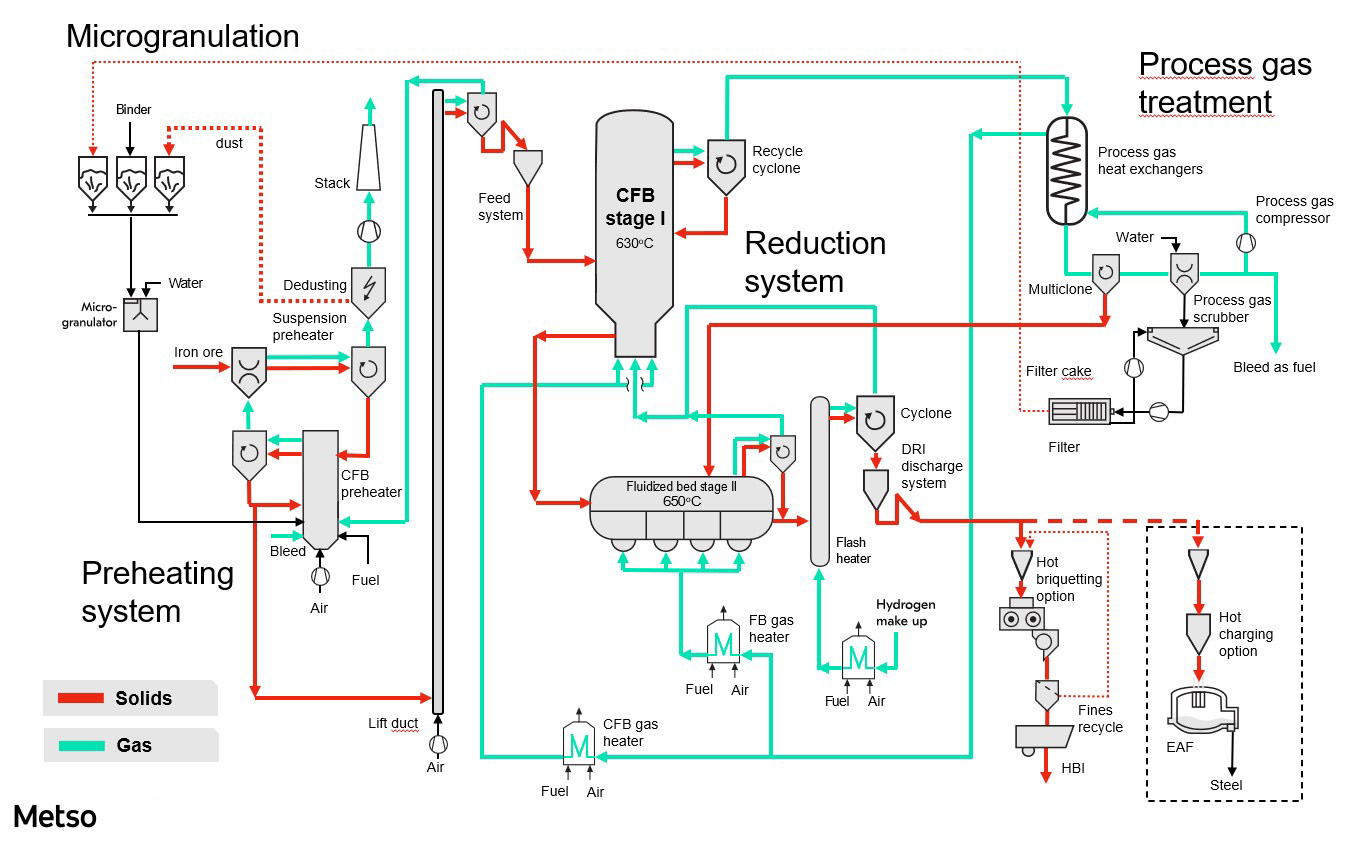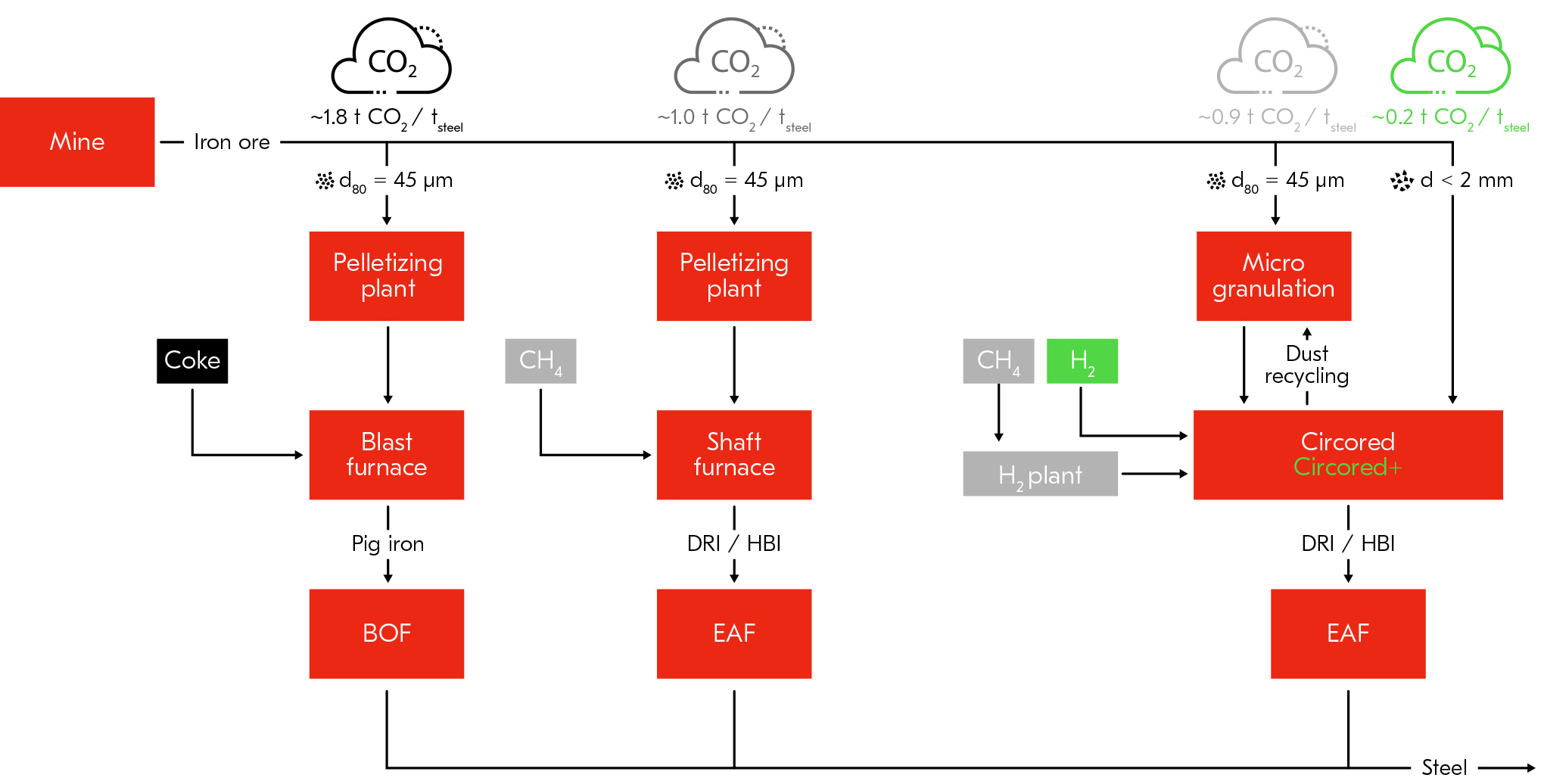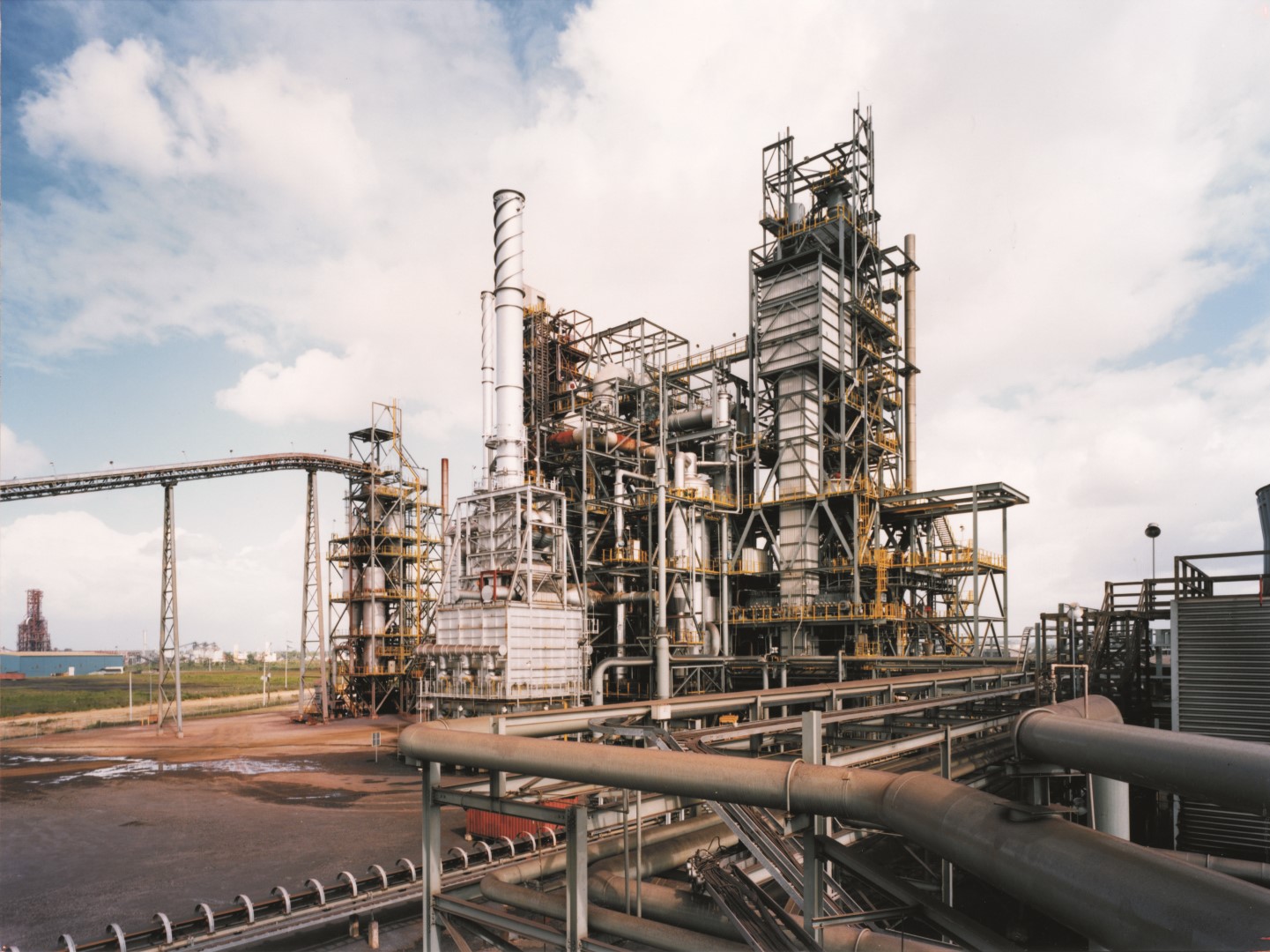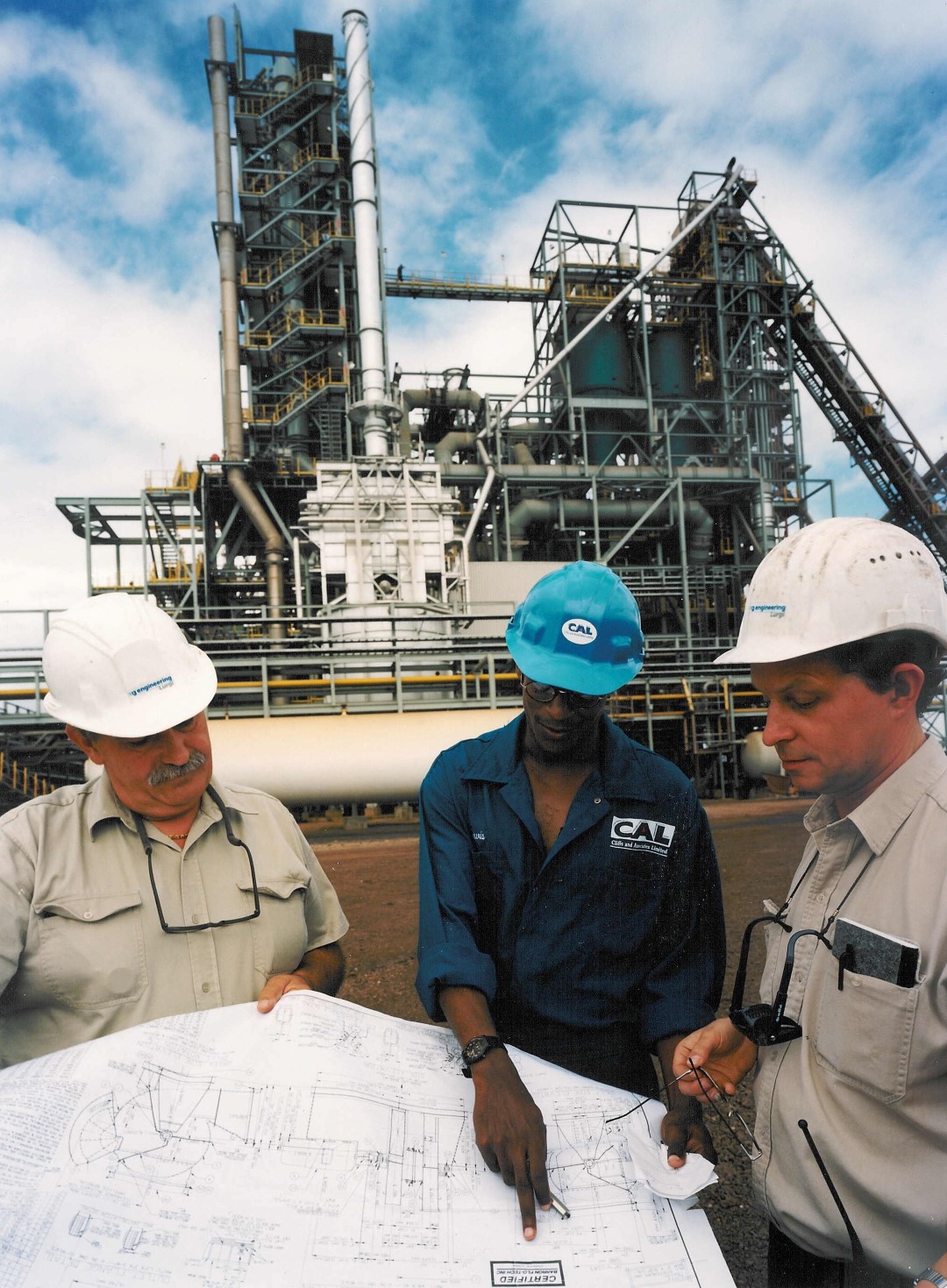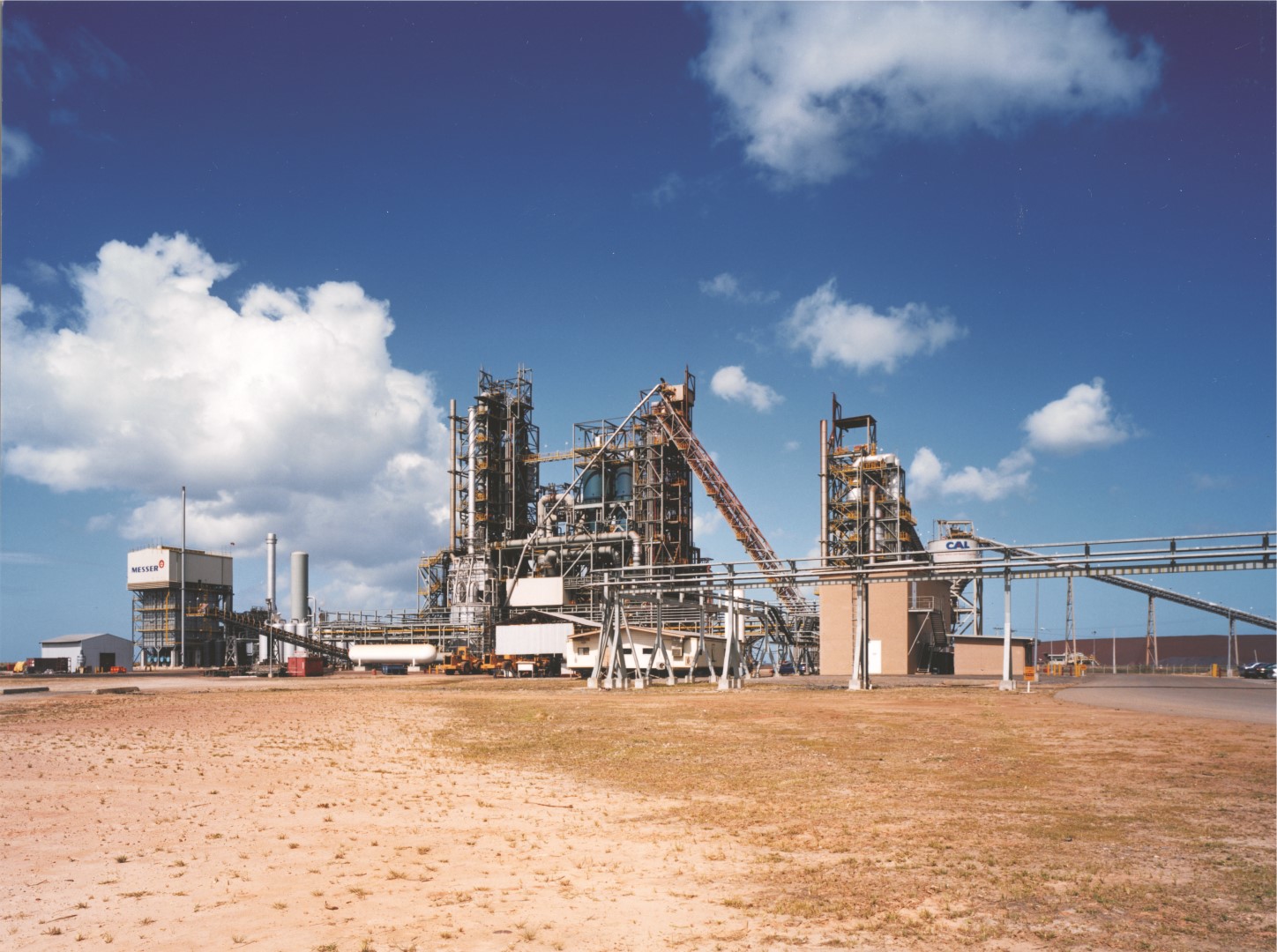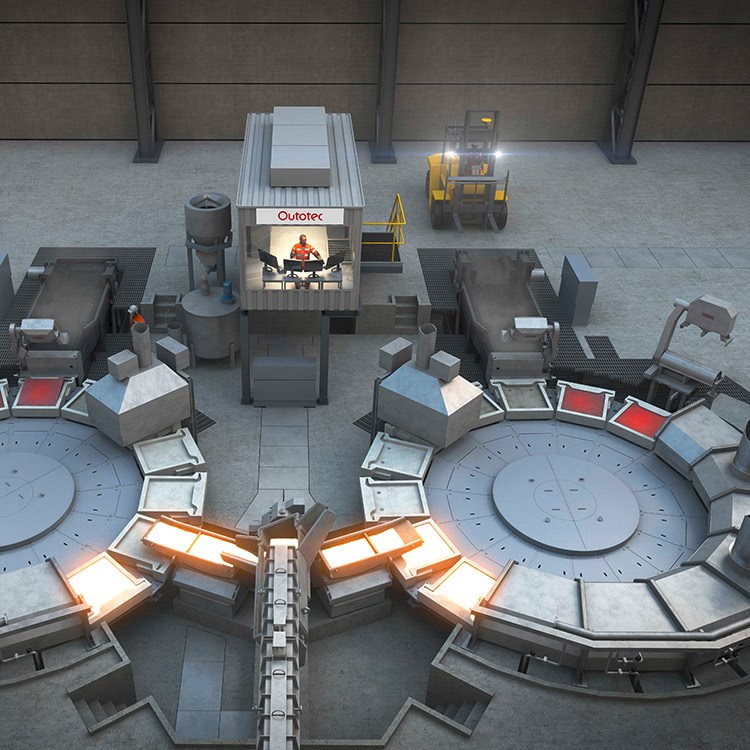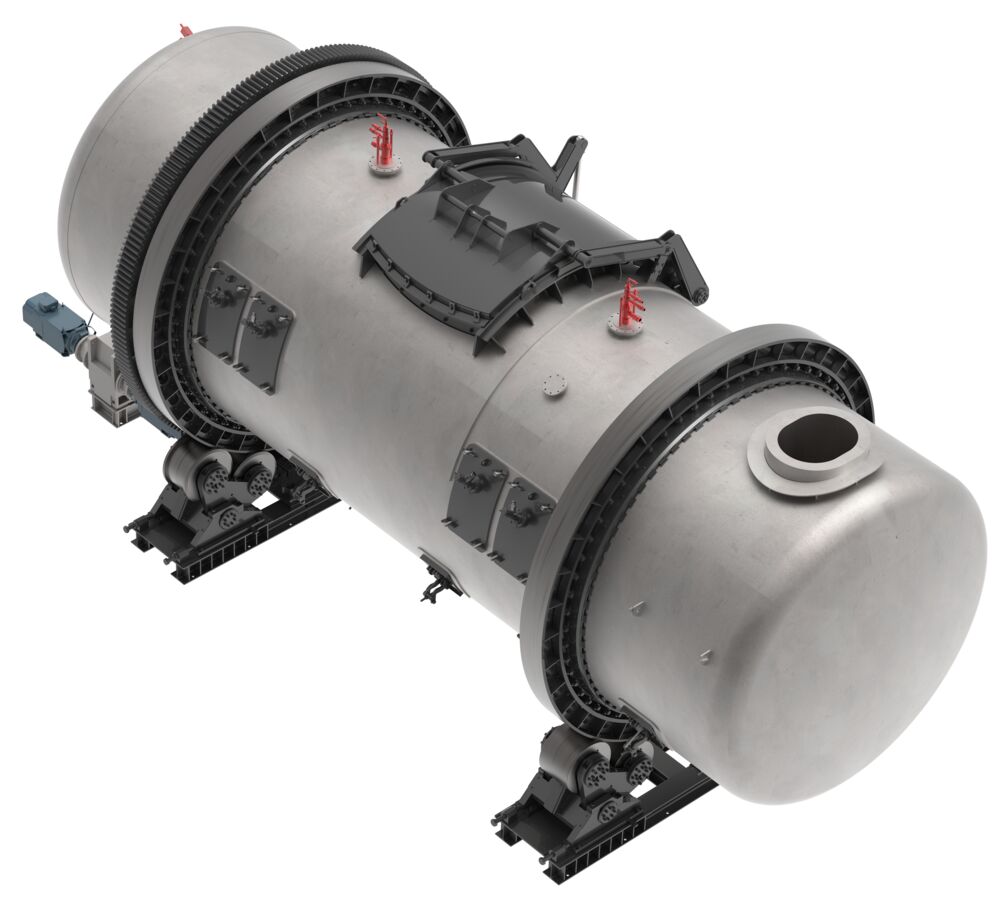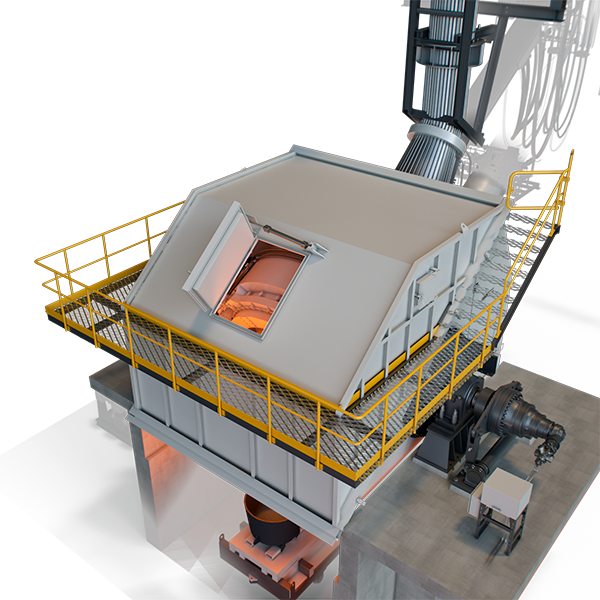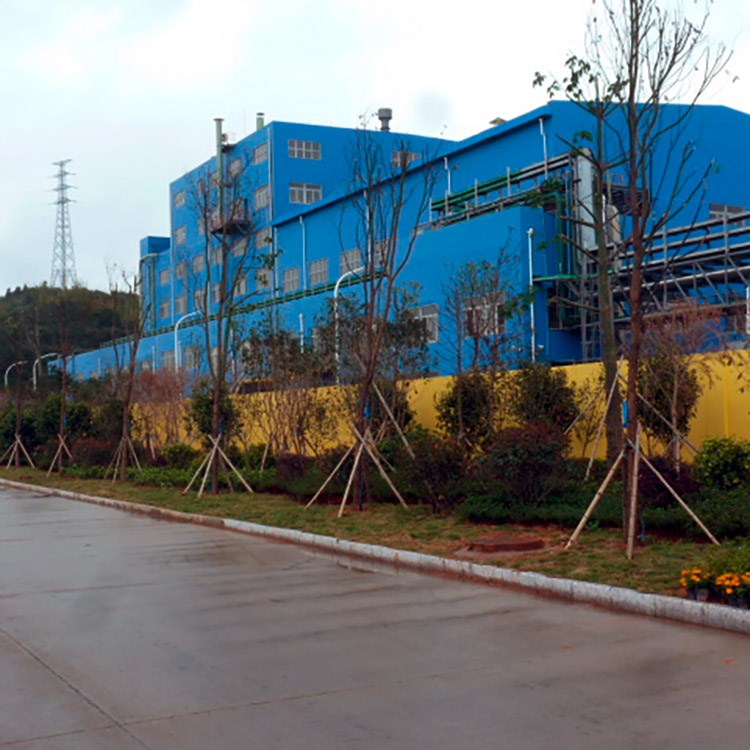Due to the reduction behavior of iron ore, Circored applies a two-stage reactor configuration with a circulating fluidized bed (CFB) followed by a bubbling fluidized bed (FB) downstream. In the flow sheet above the core process area for ore reduction is indicated by the gray circle.
The normal plant capacity, considering the technical and economical optimum for an industrial scale plant, is 1.25 Mt/y per line. Two or more lines can be combined using joint facilities and utility areas.
Main process features:
- Iron ore fines (0.1 – 2.0 mm) are dried and preheated in a CFB preheater up to 900 °C before being introduced into the first-stage CFB reactor for the primary reduction stage.
- Fast prereduction to a reduction level of up to 80%.
- Final reduction in bubbling FB reactor achieves reduction degrees in excess of 95%.
- The use of hydrogen as the sole reductant enables low temperatures of < 700°C in the CFB and the FB; this lower temperature avoids particle sticking and means that the reaction is easy to control.
- Even lower CO2 emissions can be achieved with the use of alternative source of energy as renewable electriciy and/or non-fossil fuels.
Possible modifications to the core process
In stand-alone Circored plants, the produced DRI is briquetted to HBI to enable further handling and safe transport. If a Circored plant is integrated into an existing steelmaking facility, the energy efficiency can be further increased by direct hot feeding of the DRI to an EAF.
As a general rule, the Circored process can handle feeds with a particle size of up to 2 mm, however, depending on the decrepitation behavior, particle sizes of up to 6 mm are possible. For processing ultrafine (< 50 µm) ores and scrubber dust, Metso has patented a simple microgranulation process. In this process, the ultrafine particles are agglomerated to microgranules to an average size of < 0.5 mm with the addition of a binder. The process does not require any additional heat-hardening equipment as the hardening of the granules takes place in the preheating section of the Circored plant.
For low-grade iron ores, a combination of a single reduction stage Circored process (metallization degree of up to 85%) with smelting reduction in an electric smelter for hot metal production is feasible. This combination provides the benefit to remove large volumes of impurities in the smelter via slag and further metal refining can be done in dowstream steel facilities.

